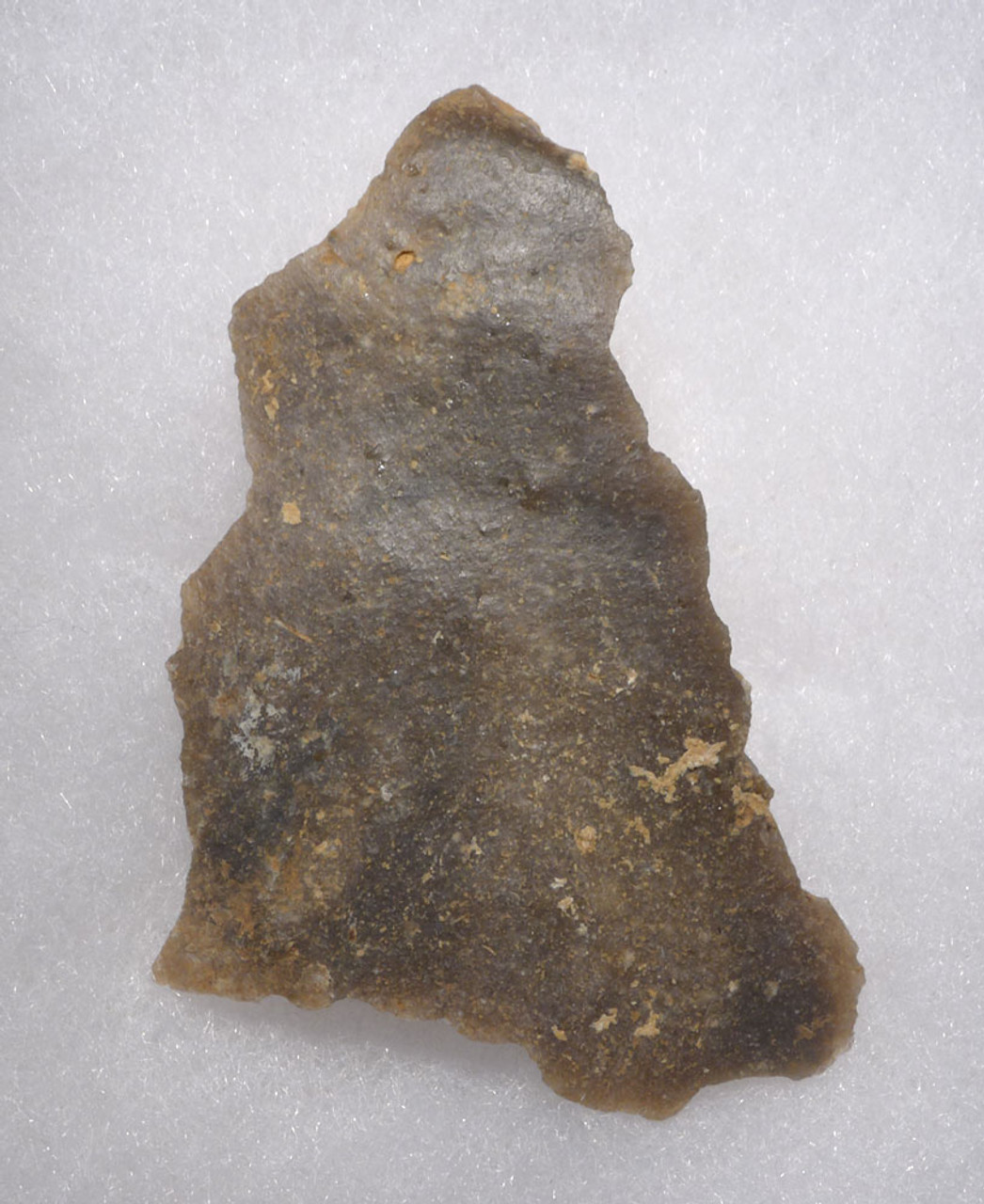Product Description
SEE MORE MOUSTERIAN NEANDERTHAL TOOLS
This authentic stone tool was fashioned by Neanderthals over 40,000 years ago out of flint, and collected from a former Neanderthal occupation rock shelter site in the Dordogne region of France, considered to be the "Capitol of Prehistory". The site this specimen was found has long been closed and protected by the government. The fact that this archeological site is off-limits to any collecting makes this genuine Early Man stone tool artifact increasingly rare and desirable! Genuine fine grade Mousterian Neanderthal tools such as this specimen are most certain to continue to appreciate in value and become more and more difficult to acquire for a private collector.
This is a Neanderthal multiple purpose flake tool with features of a BORER (AWL) and SAW (DENTICULATE). It is rare in that it features different typologies on one flake tool. There are TWO opposing sawing edges of differing degrees of fineness, both expertly flaked! The identifying feature of this typology is its undulating, wavy cutting edge made on a blade. It was made into an ingenious double tool so that there are two degrees of cutting teeth - one coarse and one fine. A prominent point was flaked on one side so that it could be used for robust boring or piercing tasks.
This flake tool is complete and in its original form as it was made by Neanderthals at least 40,000 years ago. All cutting edges are still intact as made. Intact original sediments from the layer in which it was dug are still attached on some surfaces and the microscopic crevices - evidence of authenticity not found in fakes or altered artifacts. Heavy cave deposits on one side. This is an actual complete Mousterian Neanderthal flake tool with all the features that define it as such, and separate it from worthless and highly common Paleolithic debris flakes (discarded flakes caused by flint-knapping real tools), or flakes made by natural forces such as frost or glacial action. Intact mineral deposits and deep patina on the flint surfaces and hinge fractures testify to its age, authenticity and lack of any modern alterations.
A superb example from this famous Neanderthal region!
 US DOLLAR
US DOLLAR
 EURO
EURO
 AUSTRALIAN DOLLAR
AUSTRALIAN DOLLAR
 CANADIAN DOLLAR
CANADIAN DOLLAR
 POUND STERLING
POUND STERLING






















